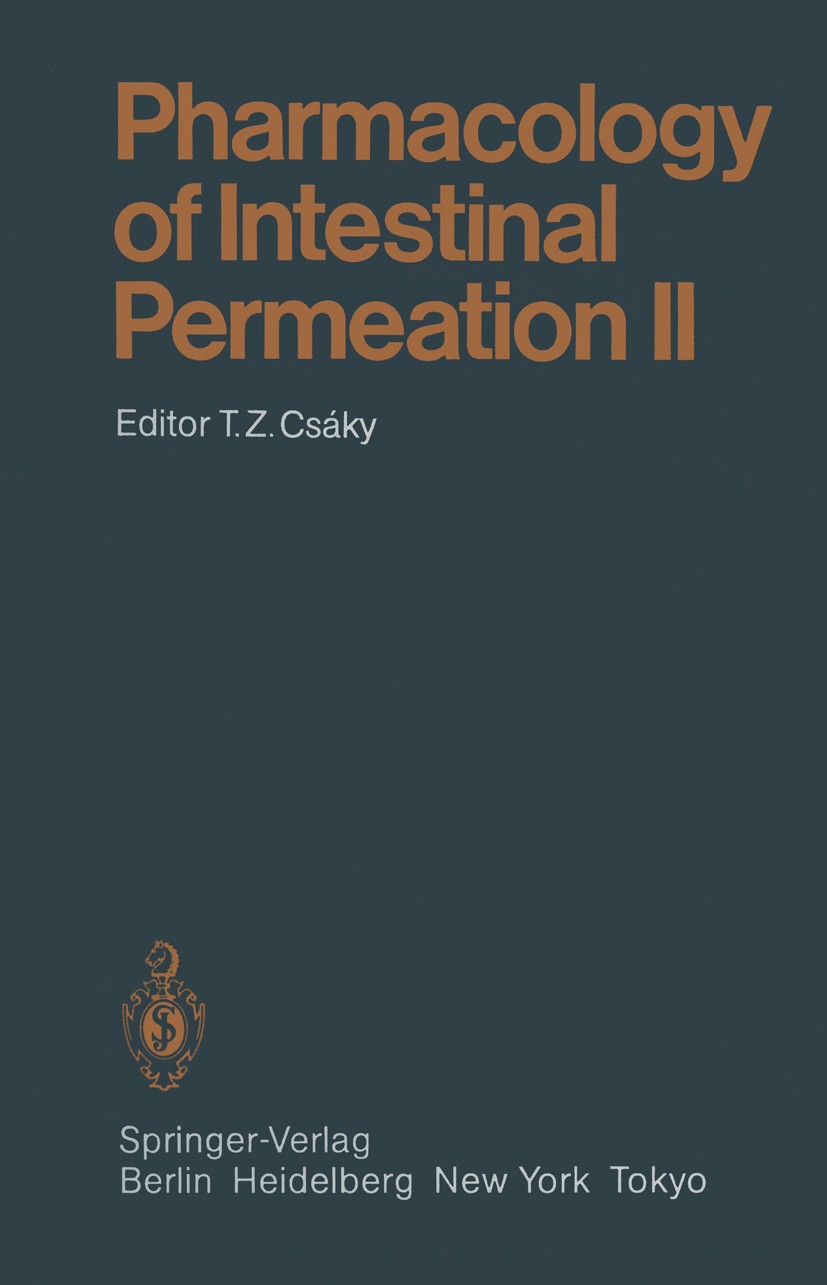| 书目名称 | Pharmacology of Intestinal Permeation II |
| 编辑 | Tihamér Z. Csáky (Professor of Pharmacology) |
| 视频video | http://file.papertrans.cn/746/745640/745640.mp4 |
| 丛书名称 | Handbook of Experimental Pharmacology |
| 图书封面 |  |
| 描述 | The intestine, particularly the small bowel, represents a large surface (in the adult 2 human approximately 200 m ) through which the body is exposed to its environ ment. A vigorous substrate exchange takes place across this large surface: nutrients and xenobiotics are absorbed from the lumen into the bloodstream or the lymph, and simultaneously, the same types of substrate pass back into the lumen. The luminal surface of the intestine is lined with a "leaky" epithelium, thus the passage of the substrates, in either direction, proceeds via both transcellular and intercellular routes. Simple and carrier-mediated diffusion, active transport, pinocytosis, phagocytosis and persorption are all involved in this passage across the intestinal wall. The term "intestinal permeation" refers to the process of passage of various substances across the gut wall, either from the lumen into the blood or lymph, or in the opposite direction. "Permeability" is the condition of the gut which governs the rate of this complex two-way passage. The pharmacologist‘s interest in the problem of intestinal permeation is twofold: on the one hand, this process determines the bioavailability of drugs and contrib |
| 出版日期 | Book 1984 |
| 关键词 | Permeation; kinetics; pharmacokinetics; pharmacology; research |
| 版次 | 1 |
| doi | https://doi.org/10.1007/978-3-642-69508-7 |
| isbn_softcover | 978-3-642-69510-0 |
| isbn_ebook | 978-3-642-69508-7Series ISSN 0171-2004 Series E-ISSN 1865-0325 |
| issn_series | 0171-2004 |
| copyright | Springer-Verlag Berlin Heidelberg 1984 |
 |Archiver|手机版|小黑屋|
派博传思国际
( 京公网安备110108008328)
GMT+8, 2025-12-15 08:52
|Archiver|手机版|小黑屋|
派博传思国际
( 京公网安备110108008328)
GMT+8, 2025-12-15 08:52


